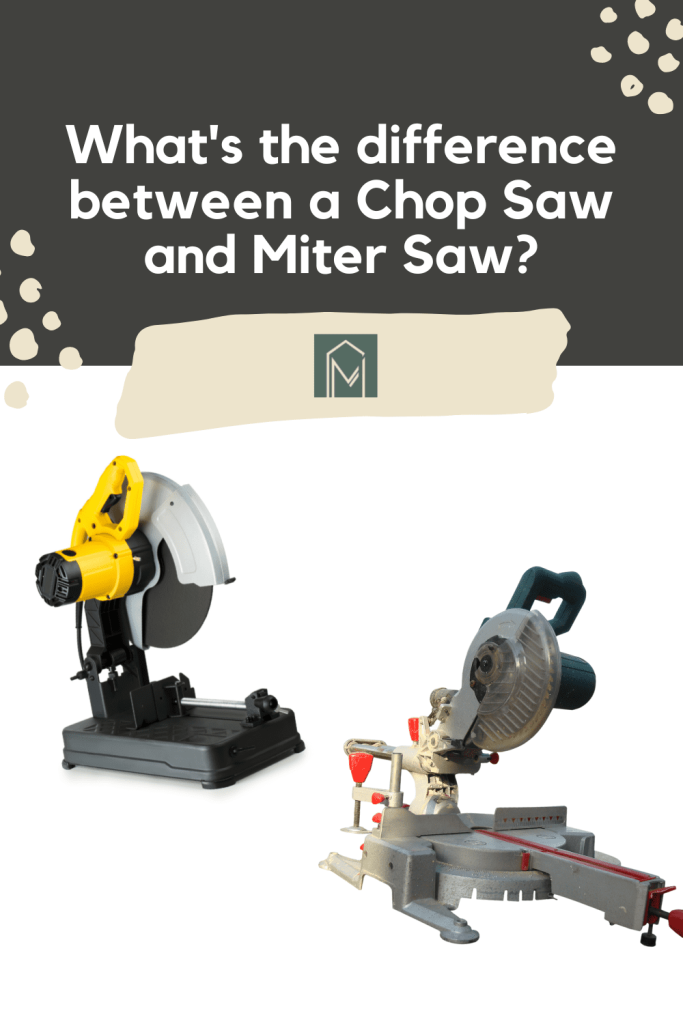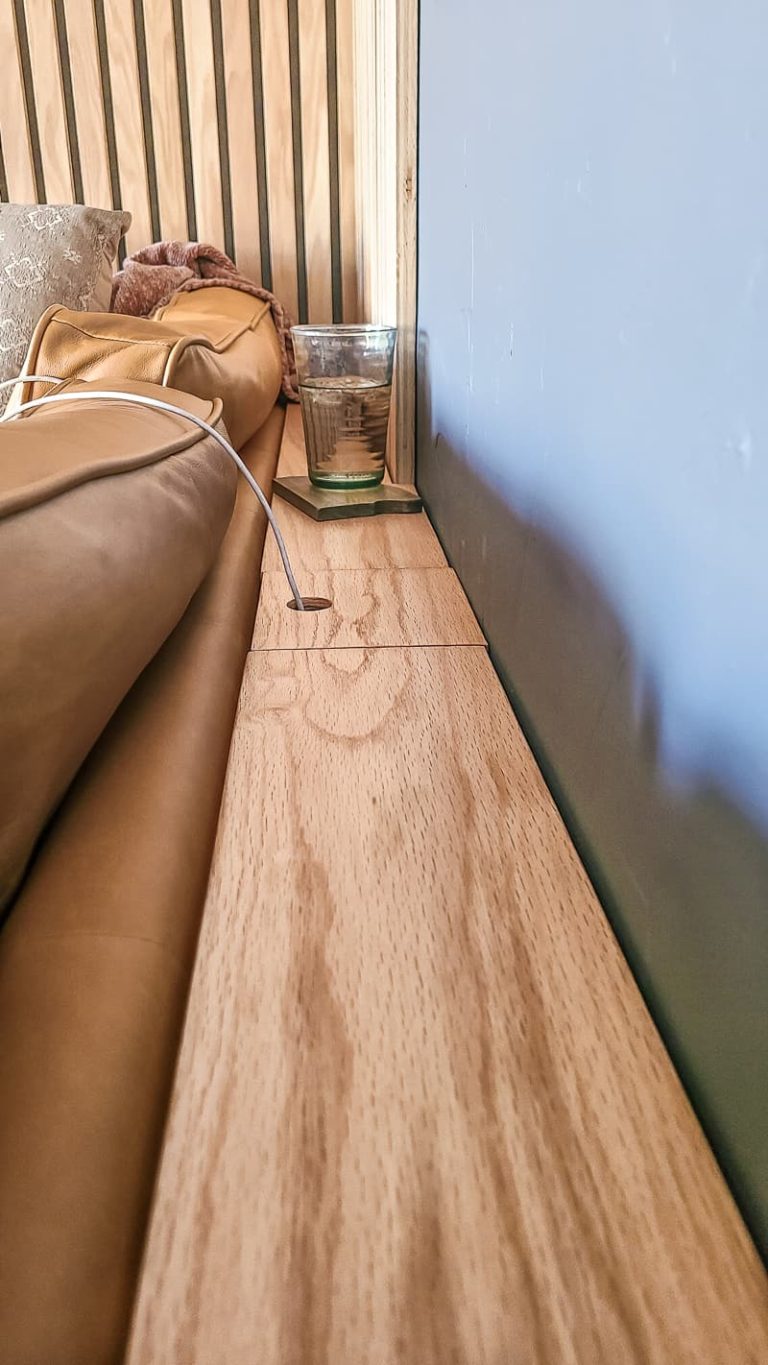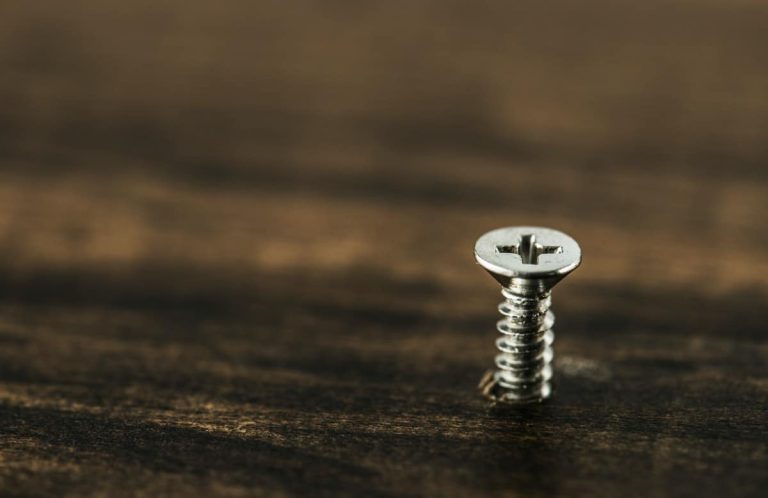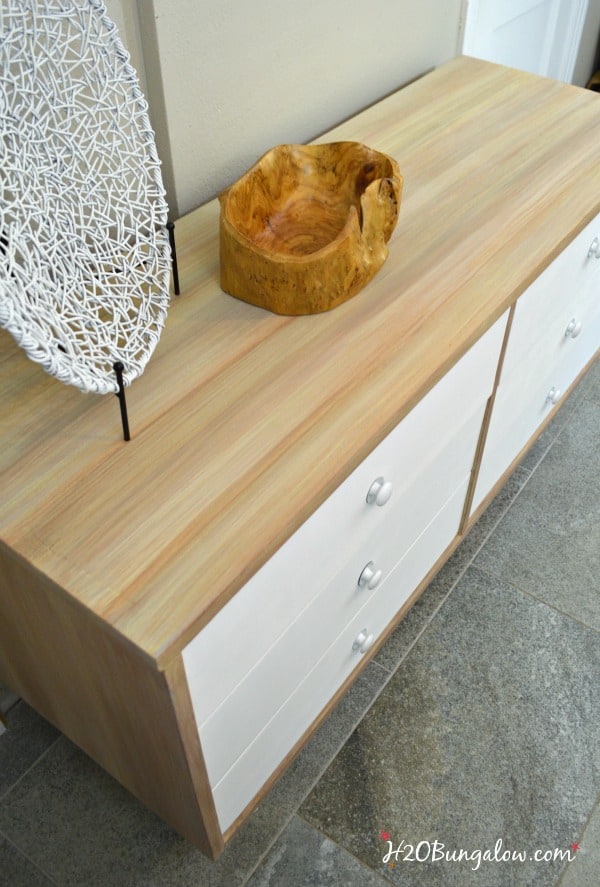Chop Saw vs Miter Saw – Which is Best for You?
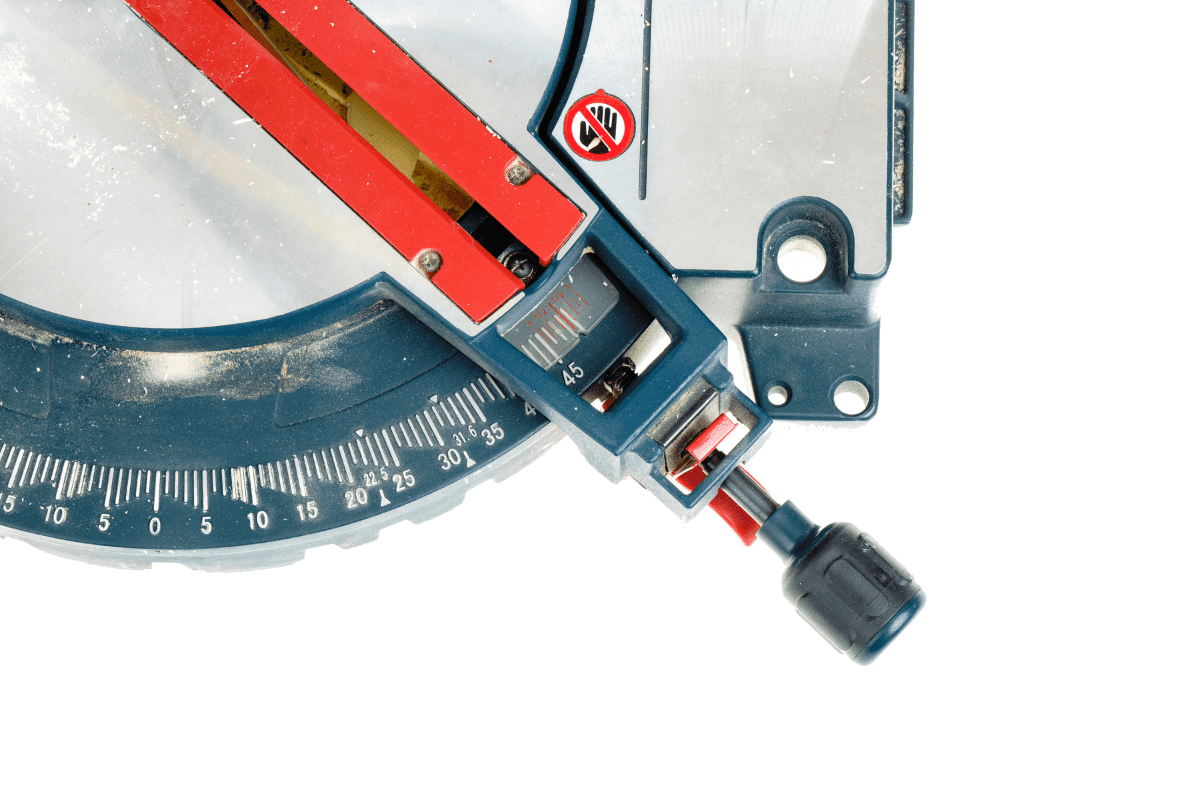
Chop saw vs miter saw. Both are great for crosscutting. But what’s the difference between the two, and which is best for you? Let’s dive in and find out!
If you’re a fan of DIY, then you already know that having the right tools is essential. But with so many options on the market, it can be tough to decide which one is best for you.
We’re constantly learning what tools are best for what job and how to get the best results in our DIY projects in and around the home!
This chop saw vs miter saw guide contains affiliate links, but nothing that I wouldn’t recommend wholeheartedly. Read my full disclosure here.
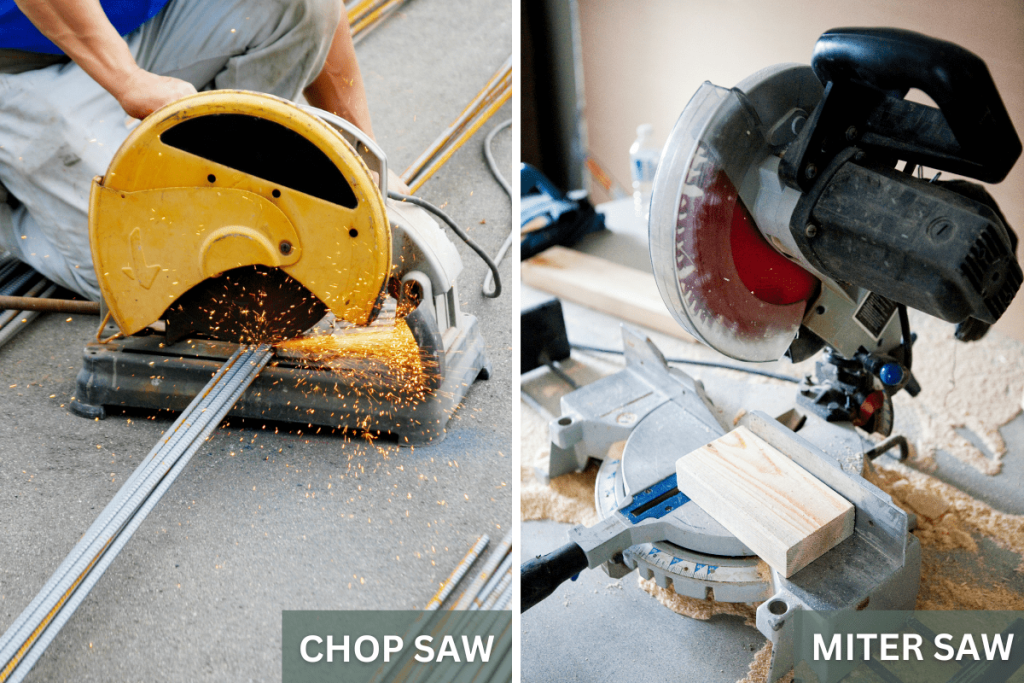
And today, I’m pitting two popular cut-off saws against each other – the chop saw and the miter saw. We’ll be touching on the key differences between the two and help you figure out which one is best suited for your needs.
So whether you’re a beginner or a seasoned pro, read on to find out which of these woodworking saws are right for you!
Types of woodworking cuts
First things first, let’s define a few things to clarify some terminology we’ll be using in the article.
- Rip cut – cut with the grain of the wood. Used to cut wood boards to the correct width.
- Cross cut – cut across the grain of the wood. Used to cut wood boards to the correct length.
- Miter cut – angled cross cut. It is a cut across the face of the wood, like a cross cut, but not at that 90-degree angle. Mitered cuts can be done at several different angles with 45 degrees being the most popular.
- Bevel cut – Another angeled cut, but this time the saw blade tilts rather than rotates.
What is a chop saw (aka cut-off saw)?
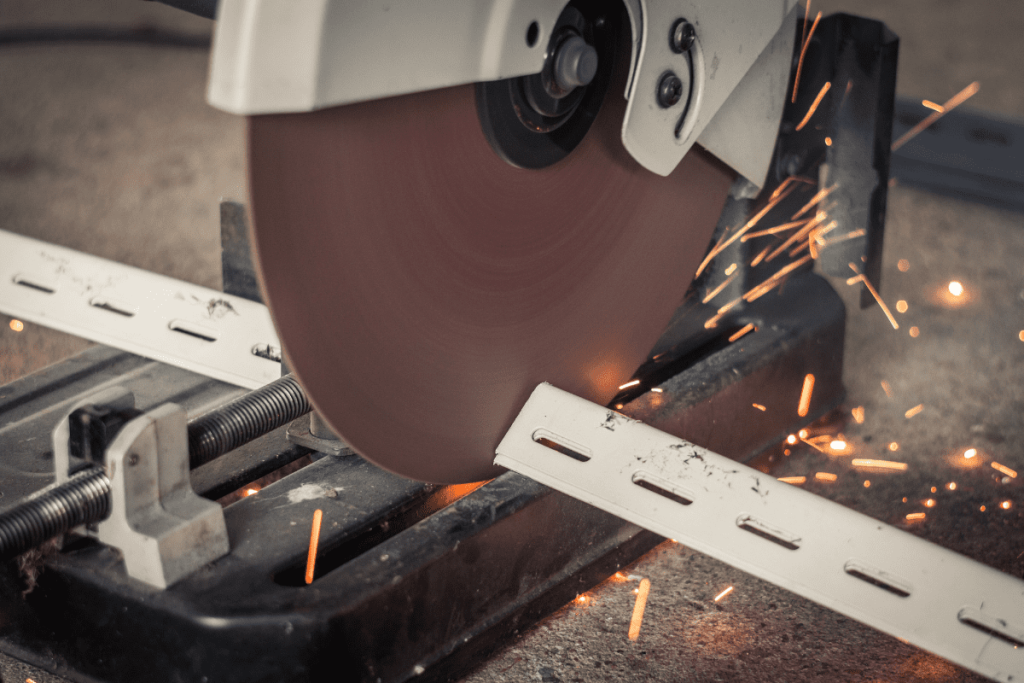
A chop saw is a handy tool for your workshop! It’s like a power saw on steroids – creating straight and accurate crosscuts every time.
Chop saw is also very commonly called a cut-off saw.
Truth be told, a true chop saw is used to cut metal, not wood. But most chop saws that are sold in home improvement stores are “hybrid saws” or sometimes called “multi-cutter”, which means that they can cut both metal and wood.
Since we only focus on woodworking projects here on the blog, we’re going to focus on hybrid chop saws as it relates to woodworking in this article.
Now, chop saws can be used for cutting both wood and metal but can only cross-cut, and there’s no chance of cutting different angles, bevel cuts, or curves. Rip cuts are also a no-no.
Chop saw key features
- Can cut different types of material (from metal to wood)
- Makes straight cuts only (90-degree cuts)
- The blade does not rotate to make angeled cuts
The makeup of a chop saw is pretty simple.
There’s a cutting area with a table, complete with a fence guard at the back, designed to hold and support the material while you’re cutting it. Most chop saws will also come with clamps to hold the boards in place while cutting your straight line.
Cut-wise, everything is done via the saw blade that can simply be moved up and down. That’s pretty much all there is to the chop saw.
Just set up your saw, clamp or hold your board or material in place, line it up, and lower the saw blade while it spins. Just let go of the saw trigger button when you’re done to stop the blade from rotating. Next, lift up slightly on the handle and it’ll return to its original position, ready to go again!
From experience and a bit of research, I’ve found most chop saw setups tend to be quite big and might take up quite a bit of space, but their convenience certainly makes them worth it!
What is a miter saw?
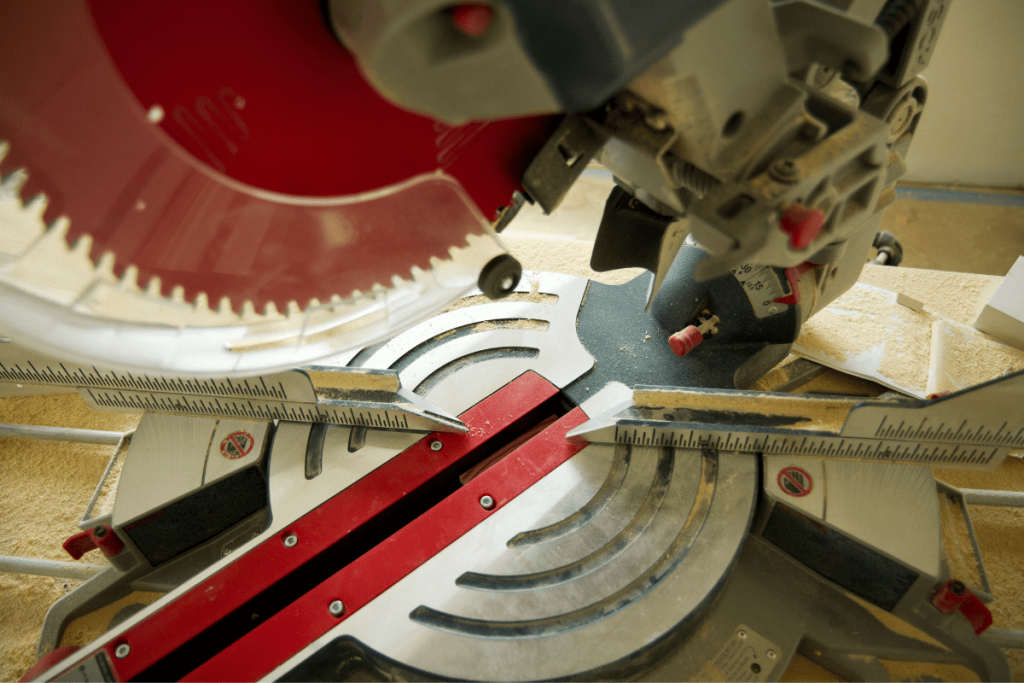
A miter saw (sometimes called a mitre saw) is a perfect tool for making clean, precise cuts in wood. Don’t be put off by the intimidating look of this device; it’s pretty simple to use and can achieve some beautiful cuts.
When you need to make cuts at different angles (say, for instance, to install crown molding or make a picture frame), you’ll want to use a miter saw.
If woodworking is your hobby, the miter saw is one of the first tools we recommend to beginner woodworkers for DIY projects. Check out the other must-have tool ideas for beginner woodworkers that we recommend here!
Miter saw key features
- Ability to make angled cuts quickly and efficiently
- Used for an array of cuts, instead of just a cross-cut
- Eliminates the need for multiple saws
Quite simply, the front of the miter saw is rounded, and the stand it’s mounted on can pivot a typical 45 degrees, either left or right. Most will also come with an angle gauge to cut exactly where you need to.
Interestingly, there’s such a thing as a compound miter saw, which is basically the same, except it can tilt horizontally while remaining parallel to the table. This is designed for making bevel cuts.
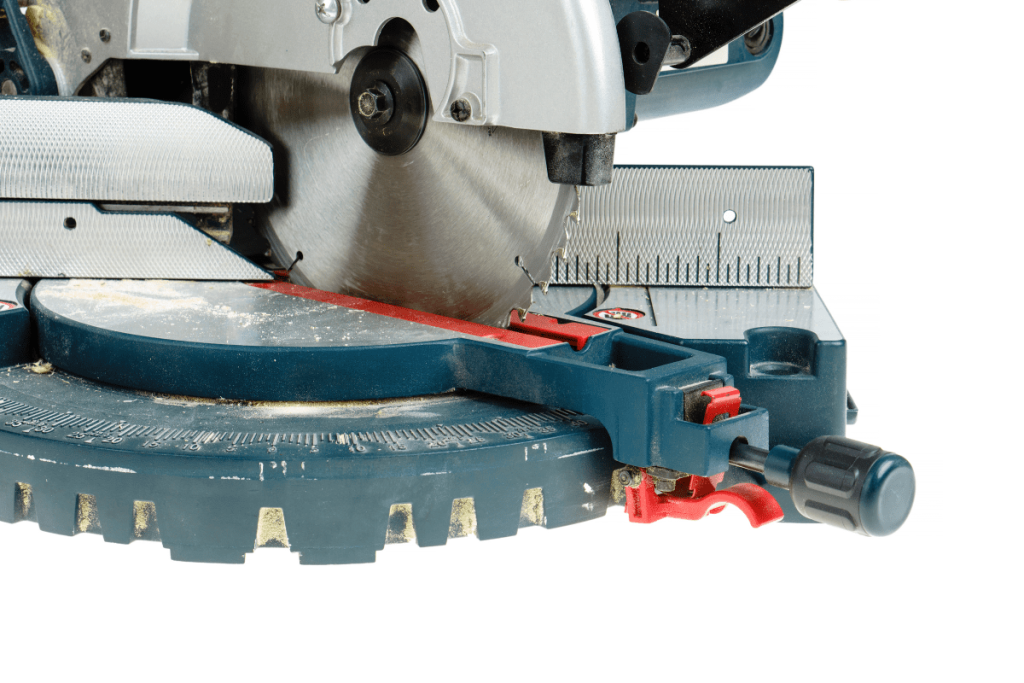
Types of miter saws
- Traditional miter saw: Blade can pivots left to right for angled cuts, blade can be pulled down over the workpiece but doesn’t slide forward to back
- Sliding miter saw: The entire blade will slide forward and backward as you pull it down over the wood piece, allowing you to cut wider boards.
- Compound single bevel miter saw: The blade can pivot left to right, but it can also tilt in one direction for bevel cuts. A compound miter saw can make 90-degree angle cuts, miter cuts, bevel cuts, or compound cuts (which combine with miter and bevels).
- Compound dual bevel miter saw: The blade can pivot left to right, but it can also tilt up and down for bevel cuts in two directions. A compound miter saw can make 90-degree angle cuts, miter cuts, bevel cuts, or compound cuts (which combine with miter and bevels).
- Compound dual bevel sliding miter saw: The blade slides forward and backward and can be pivoted and tiled to make both miter and bevel cuts. This is the most advanced type of miter saw you can get. If you’re really serious about upleveling your woodworking game, this is your best bet.
Each type of miter saw will also come either corded or cordless and be available in various different sizes based on the blade (7-in, 10-in, 12-in, etc).
Chop saw vs miter saw: how are they similar?
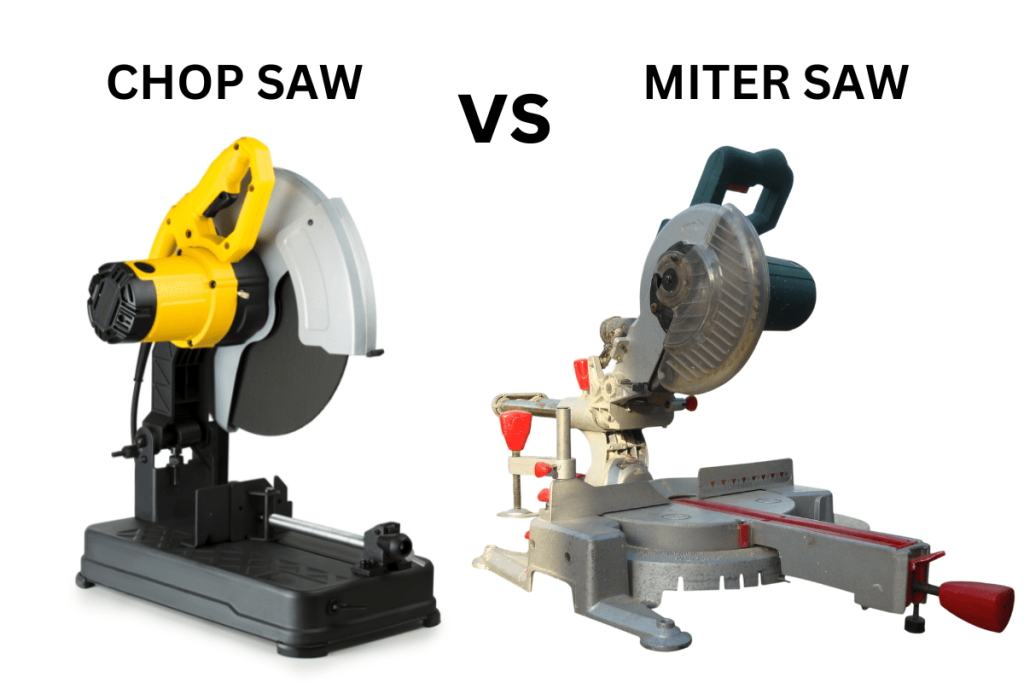
- Both are power tools
- Both are cross-cutting machines
- Both have a circular blade that is pulled down over the top of the material to make accurate cuts
- Both use a round saw blade that spins away from the person using the tool
- Both tools have a flat surface to put your material on and a back fence to keep it aligned
- Both are a stationary power tool
Chop saw vs miter saw: what’s the main difference?
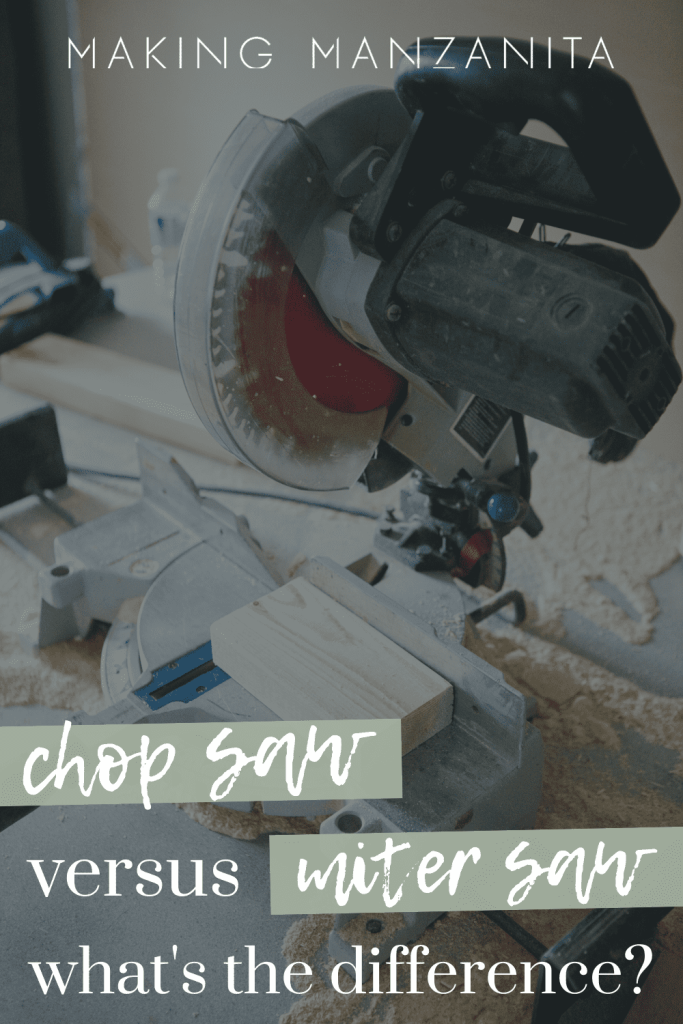
The most significant difference between the chop saw and the miter saw is the miter saw’s ability to rotate the blade to make angle cuts whereas the chop saw can only make 90-degree cuts.
That’s it. That’s the main difference between the two!
Excuse the pun, but these saws are pretty cut and dry regarding how straightforward they are.
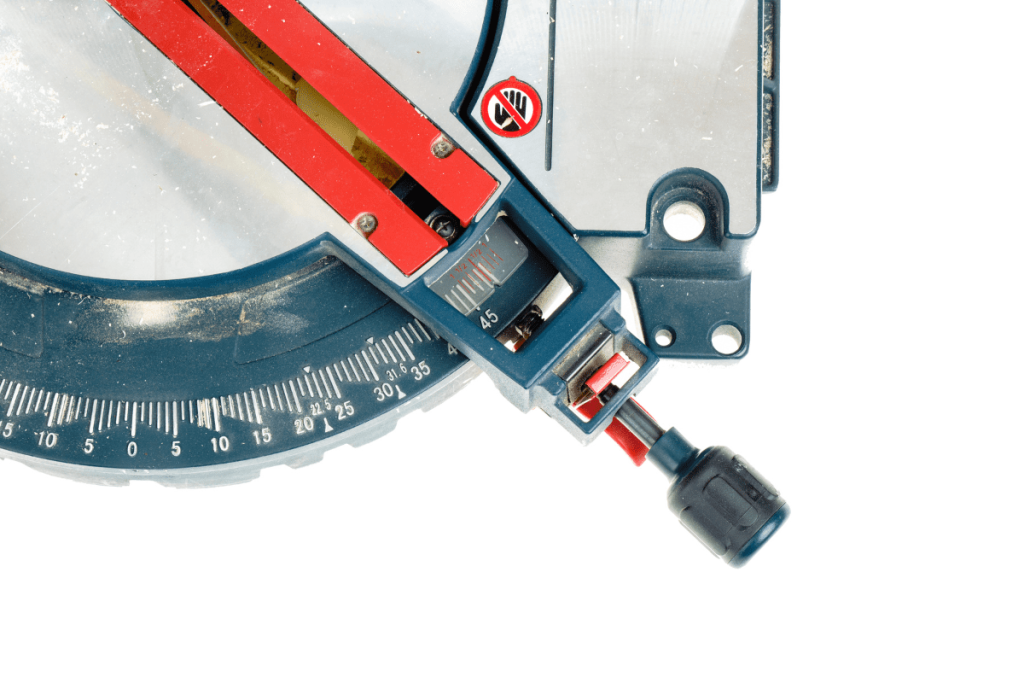
There’s no doubt a miter saw looks and feels very similar to a chop saw. However, look closely, and you’ll find one very noticeable difference: the pivot. The saw blade rotates from left to right to make angled cuts.
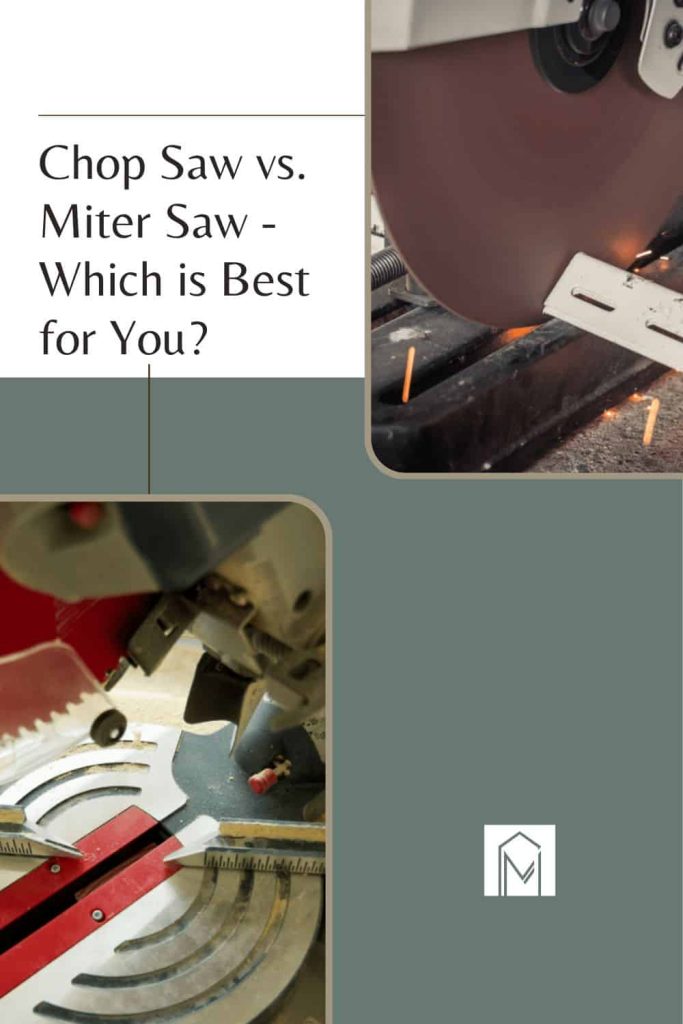
How to choose a saw?
How you choose which of these power tools is best all comes down to the type of project you’re working on.
- If you’re looking for straight cuts on metal or wood, break out your trusty chop saw and get to work.
- If the job requires precise angle cuts in wood or trim, a type of saw like a miter saw is your best tool for the job.
In order to decide which is right for you, let’s summarize the kind of projects you would use them for.
Chop saws that only cut crosscuts with their abrasive blades are ideal for working with different types of materials like:
- Metal and plastic pipes
- Metal rods
- Metal sheet
- Building materials like posts and guttering
- Wooden constructs
Miter cuts can do all this but have much more flexibility with how the materials can be cut, thanks to their saw blades that rotate.
Typically, you’ll use a miter saw for carrying out tasks like:
- Cutting baseboards and corner beads to a length
- Cutting through hardwood floors
- Cutting angled wood for frames and windows, pictures frames, and so on
- Bevel cuts for joints at a 90-degree angle
- Compound angles (combining both a bevel and miter) when installing crown molding
Most power miter saws you get these days will be a compound miter saw variety – meaning that it can do bevel cuts as well as a miter.
Now, there’s no right or wrong when choosing between a miter saw and a chop saw. Both are great at what they do, but there’s one clear way to decide.
If you’re only making crosscuts, plain and simple, a chop saw is a way forward. They’re affordable, easy to use and get the job done.
However, if you think you’re going to need to make more complex cuts, not even now but also in the future when it’s worth paying a little extra for the miter saw.
At the end of the day, a miter saw cuts everything a chop saw can and more, so if you can afford the initial investment, then it’s undoubtedly future-proofing yourself!
So, if you’re searching for the best saw for your next DIY project, do your research before making a decision.
So what do you think… chop saw vs miter saw, what is the right tool for you?
